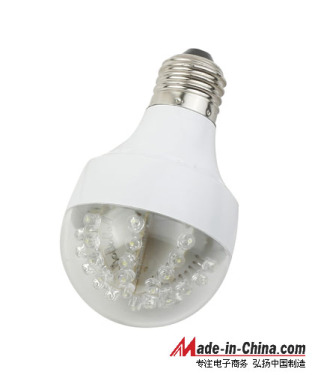 LED lights, prices are falling
LED lights, prices are falling According to a research report of the LED bulb price report in February 2012, the price of LED bulbs replacing 40-watt and 60-watt LED lamps in the United States dropped sharply. The replacement of 40-watt LED bulbs fell by 19%, and the average price had fallen below 20 percent. The dollar came to 18 dollars.
Another survey found that the prices of the most recent mainstream 0.5W and 1W LEDs have fallen faster, with a decrease of 5-10% in the fourth quarter of 2011 and almost 40-50% in the full year of 2011. It is expected that this speed will slow down somewhat in 2012 because high-power LEDs still have certain technical thresholds and costs, so it is estimated that its prices will drop by 20-30% throughout 2012.
Various governments have adopted relevant policies to promote the development of LED lighting industry
China: Local governments provide an average of at least 70% or $1.5 million in subsidies for each MOCVD equipment purchase. In addition, local governments also provide tax and utility fee concessions.
Yangzhou: Give financial subsidies to purchase MOCVD equipment for LED epitaxial wafers that have reached the international advanced level. The eligible blue-green light MOCVD subsidy funds can reach 10 million yuan/set, and the red, yellow and light MOCVD subsidy funds can reach 8 million yuan/set (fiscal and municipal finances each bear 50%.)
Chengdu: For the LED lighting product demonstration project organized and implemented according to the unified requirements of the municipal government, a 10% subsidy will be given to the corresponding district (city) county according to the total price of LED lighting products used in the demonstration project. Public departments and enterprises and institutions that purchase LED lighting products are subsidized by 10% according to the bid price, and household households who purchase LED lighting products receive subsidies of 25% according to the bid price.
Shenzhen: For companies participating in LED demonstration projects of government investment projects, a 10% subsidy will be given based on the price of the lamps and the interest will be discounted for 3 years. For companies that undertake LED application demonstration projects for corporate investment projects, subsidies are provided at 30% of the price of LED lamps.
South Korea: 5 years investment of 279 million US dollars to promote LED research and development
In May 2011, the Korean Ministry of Knowledge Economy stated at the Economic Policy Adjustment Conference that in order to promote the development of LED industry integration technology, a total of 300 billion won (approximately 279 million U.S. dollars) will be budgeted in the next five years, and preparations will be made to promote the LED industry. Yuejin's support strategy. The Korean government plans to advance LED lighting integration into a global advanced position by 2015, and proposes three major policy tasks to ensure that new markets dominate competitiveness, ensure market creation and consumer trust, and constitute a virtuous cycle of industrial ecology.
United States: The U.S. Department of Energy is accepting applications for funding from energy-saving lighting technology developers until December 15, 2011. The Obama administration has approved up to 10 million US dollars in solid-state lighting (such as LED and organic LED) manufacturing R & D funding support.
China's LED lighting, where is the spring
Due to energy crisis, environmental issues, technological progress, and other factors, the Chinese government has provided strong support for the popularization of LED lamps. However, the development of LED can be difficult. LED spring is where?
China's lighting market is vast and the demand is large. There are not only some old brands in the lighting industry, such as Yaming and Sun, but also some local companies with competitive advantages in other industries. At the same time, the business opportunities in China's lighting market have also attracted many famous international brands to enter this market. According to the person in charge of the China Lighting Association, a major problem in China's lighting industry is the lack of products with independent technology. In addition to technology, the lack of well-known brands is also another major issue in China's lighting industry. Take holiday decoration lamps as an example. At present, China has become the world's largest producer of decorative lamps. The quality of products has also been recognized by the world. There are a large number of products each year on the international market. However, due to the lack of well-known brands, these products are mostly in the form of OEMs. To go to the international market, the value of its products has not fully manifested. In addition, China's core intellectual property rights, such as LED materials and devices, are relatively weak. For large-scale enterprises, the main obstacle is the lack of response to intellectual property protection.
If lighting companies are aware of their own deficiencies and strengthen self-research and development of lighting products, they will continue to build lighting brands, seize business opportunities for foreign products, deepen understanding of laws and regulations concerning international intellectual property protection, and strengthen investment in independent intellectual property rights. Businesses must have good development, and spring may not be far behind.
AR transforms how you work, learn, play, shop, and connect with the world around you. It`s the perfect way to visualize things that would be impossible or impractical to see otherwise.
UCOAX Custom Made varous link cables for AR/VR Devices, we can work out solutions according to your application with best prices and high quality.
Please feel free to contact us.
AR VR Link Extension Cable, Oculus Quest 2 Link Cable, Great Virtual Reality Gaming Accessories for Oculus Quest, VR Extension Link Cable
UCOAX , https://www.ucoax.com